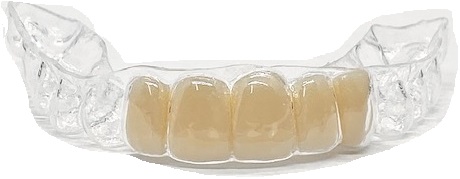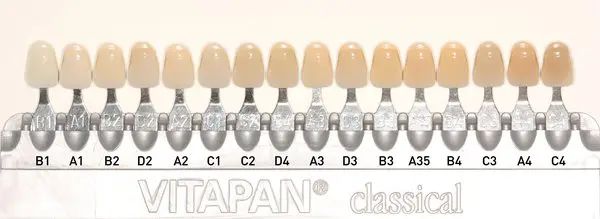Pregnancy Tooth Extraction: Minimizing Risks And Complications

Pregnancy is a unique period in a woman’s life, filled with numerous physiological changes that can impact various aspects of her health, including dental health. One of the critical concerns during this period is the need for dental procedures, such as tooth extraction, which may arise due to several reasons like tooth decay, infection, or gum disease. The primary concern with any medical or dental procedure during pregnancy is ensuring the safety of both the mother and the fetus. In the case of tooth extraction during pregnancy, it is crucial to minimize risks and complications.
Understanding the Risks
Tooth extraction, like any other medical procedure, carries certain risks. During pregnancy, these risks can be amplified due to the hormonal changes and the overall physiological state of the body. The main risks associated with tooth extraction during pregnancy include:
- Bleeding Complications: Pregnancy is associated with changes in blood clotting mechanisms, which can lead to increased bleeding during and after tooth extraction.
- Infection: The risk of infection is higher during pregnancy due to the immune system’s altered state. Untreated infections can lead to serious complications, including preterm labor.
- Medication Risks: The use of certain medications, such as antibiotics or pain relievers, may be necessary during tooth extraction. However, their use during pregnancy must be carefully managed to avoid any potential harm to the fetus.
- Stress and Anxiety: The procedure itself, along with the anxiety of undergoing a medical procedure during pregnancy, can cause undue stress, which is best minimized for the health of both mother and fetus.
Minimizing Risks and Complications
To ensure a safe tooth extraction during pregnancy, several precautions can be taken:
Timing of the Procedure
The timing of the tooth extraction is crucial. While emergency situations may demand immediate action, elective procedures are best scheduled during the second trimester (between 13 and 26 weeks of gestation). This period is considered the safest for dental procedures because the risks of miscarriage and preterm labor are lower compared to the first and third trimesters.
Pre-procedural Evaluation
Before the tooth extraction, a thorough medical and dental evaluation is essential. This includes discussing any medications being taken, the overall health of the patient, and any concerns or risks associated with the procedure. It’s also an opportunity for the patient to ask questions and address any anxiety they may have.
Anesthesia and Pain Management
The use of local anesthesia is generally considered safe during pregnancy. However, the choice of anesthetic and the management of pain must be carefully considered to avoid any potential risks to the fetus. Nitrous oxide, for example, should be used with caution and under close monitoring.
Infection Control and Antibiotics
Preventing infection is paramount. The use of antibiotics, if necessary, should be based on the current guidelines for antibiotic use during pregnancy. The choice of antibiotic and the duration of treatment must balance the need to prevent infection with the potential risks to the fetus.
Post-procedural Care
After the tooth extraction, it’s essential to follow the dentist’s instructions carefully to minimize the risk of complications. This includes managing pain appropriately, monitoring for signs of infection, and maintaining good oral hygiene.
Expert Insights
According to the American Dental Association (ADA) and the American College of Obstetricians and Gynecologists (ACOG), routine dental care, including diagnostic procedures and treatment for dental diseases, can be safely performed during pregnancy. Emergency procedures, such as tooth extraction, should not be delayed, as postponing treatment can result in more severe dental problems and potentially harmful effects on the mother and fetus.
Scenario-Based Examples
Consider the scenario of a pregnant woman in her first trimester who experiences severe toothache due to an abscessed tooth. Despite the early stage of pregnancy, the risk of leaving the infection untreated (which could lead to more severe complications such as sepsis or preterm labor) outweighs the risks associated with tooth extraction under proper medical and dental supervision. In such cases, the procedure would be performed with caution, using appropriate anesthesia and taking steps to minimize stress and prevent infection.
FAQ Section
Is it safe to undergo tooth extraction during pregnancy?
+Tooth extraction can be safely performed during pregnancy, particularly during the second trimester, under the guidance of a dentist and with proper precautions to minimize risks.
What are the risks associated with tooth extraction during pregnancy?
+The risks include bleeding complications, infection, medication risks, and stress. However, these can be minimized with proper care and precautions.
Can I take pain relievers after tooth extraction during pregnancy?
+Yes, but with caution. The choice of pain reliever should be discussed with your dentist or healthcare provider to ensure it is safe for use during pregnancy.
How can I prevent dental problems during pregnancy?
+Regular dental check-ups, good oral hygiene practices, and a healthy diet can help prevent dental problems. It's also important to inform your dentist about your pregnancy.
Conclusion
Tooth extraction during pregnancy, while it carries certain risks, can be safely performed with the right precautions and under the guidance of dental and medical professionals. Understanding the potential risks and taking steps to minimize them is crucial for the health and well-being of both the mother and the fetus. Regular dental care and maintaining good oral health are essential components of a healthy pregnancy, ensuring that any necessary dental procedures, including tooth extraction, can be managed effectively and safely.


